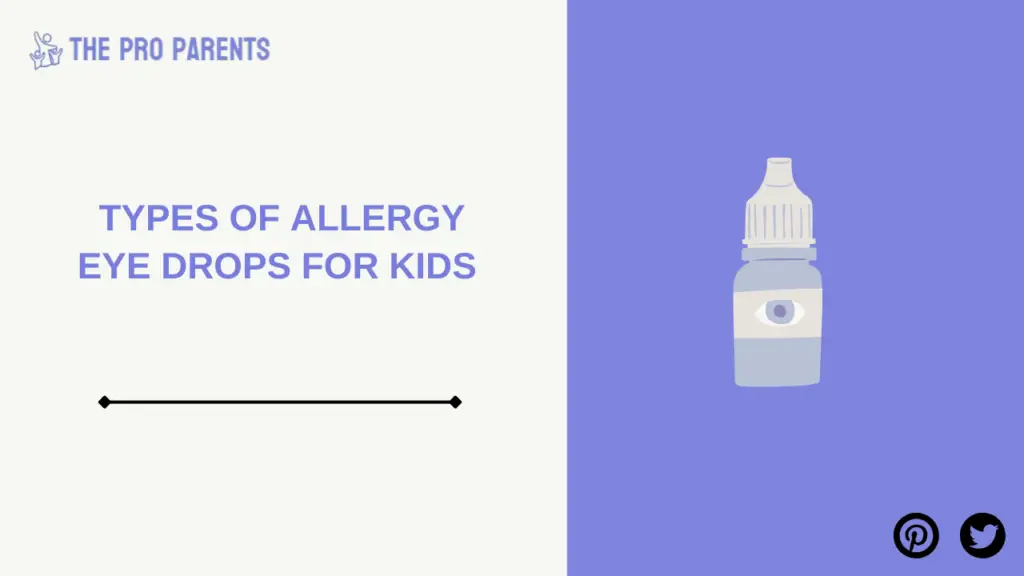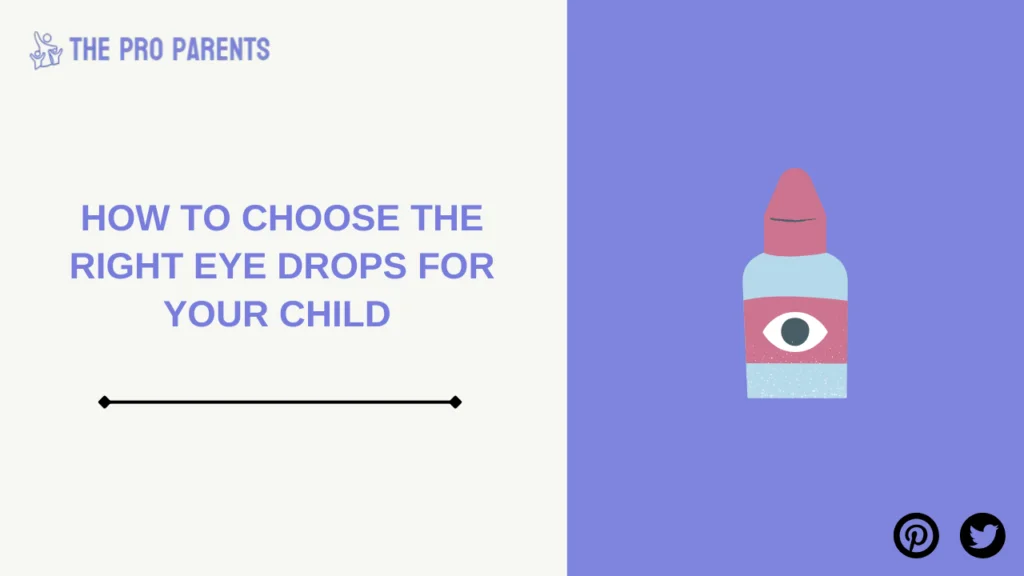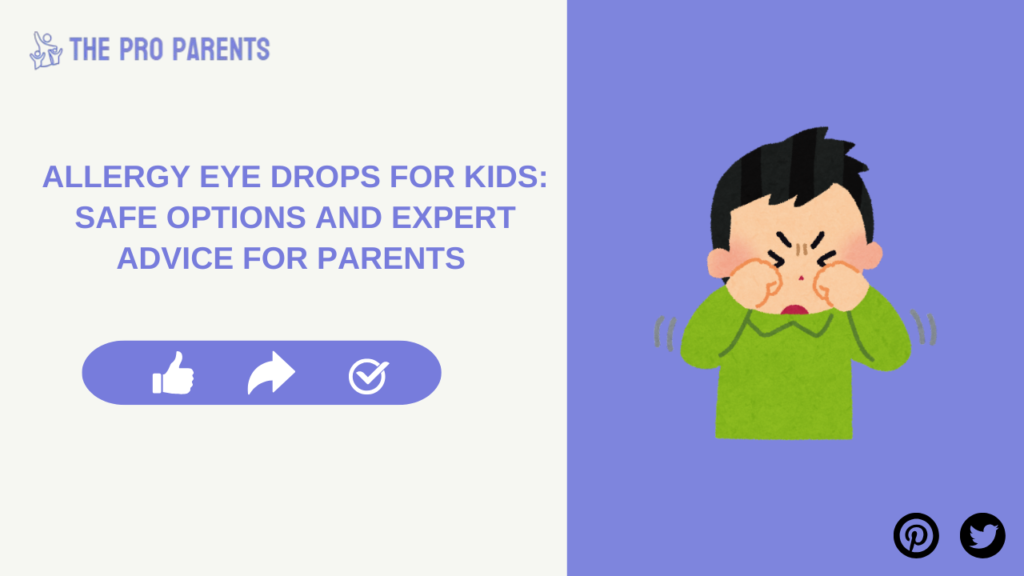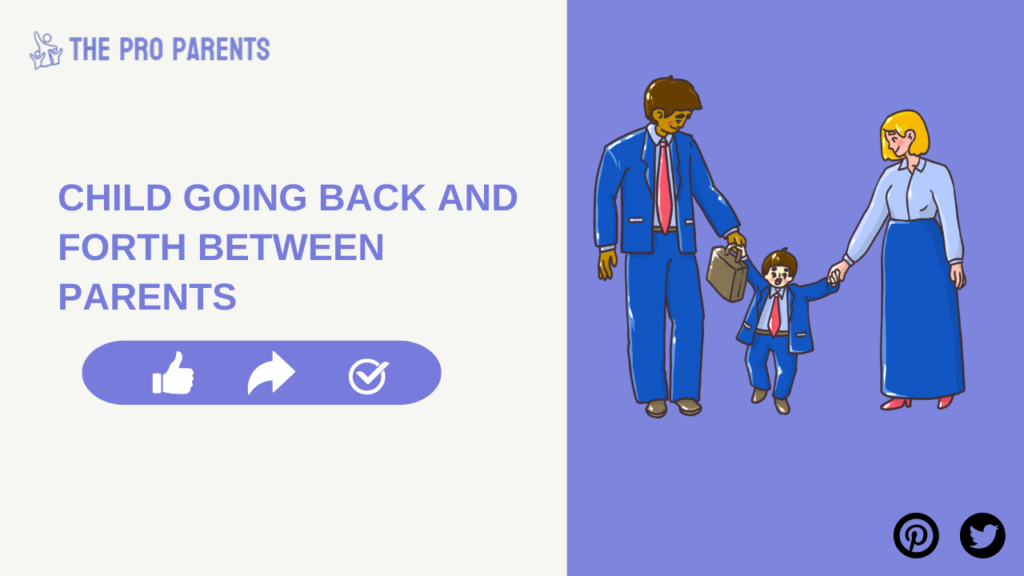Children have a knack for adventure, but with every outdoor escapade, there’s a chance they bring home more than smiles and messy clothes. Allergies, particularly those affecting the eyes, are a common problem for kids. From pet dander to pollen, allergens can leave young eyes itchy, red, and teary – and as parents, it’s distressing to see little ones in discomfort.
Eye allergy symptoms, if left untreated, can interfere with your child’s daily activities and even pave the way to more severe issues. Thankfully, there’s a solution that can help – allergy eye drops.
This guide will explore everything parents need to know, from the safety of using eye drops on kids to expert advice on choosing the right type.
Table of Contents
Understanding Allergies in Kids
Young children often face allergic reactions to common environmental triggers, and their eyes can be particularly sensitive. Here’s what you need to know about eye allergies in kids.
Common Allergens Behind Eye Allergies
- Pollen: A top offender during spring and early summer, pollen comes from trees, grasses, and weeds, triggering allergies like sneezing, itchy eyes, and congestion for many people.
- Dust Mites: These microscopic pests thrive in bedding, upholstery, and carpets, feeding on dead skin cells. While they’re invisible to the naked eye, their presence can trigger allergies, causing sneezing, itchy eyes, and respiratory irritation.
- Pet Dander: Cats, dogs, and other furry friends might be adorable and bring so much joy to our lives, but their dander? Not so much! Pet dander is made up of tiny flecks of skin and proteins found in their saliva and urine, which can trigger allergies in sensitive individuals. Regular grooming and cleaning can help reduce its impact, but it’s something to watch out for if you or someone in your household has allergies.
- Mold: Often found in damp or poorly ventilated areas, mold spores can pose significant health risks, especially for those with allergies or respiratory issues. Common in bathrooms, basements, or near leaky pipes, mold can be a hidden culprit that requires immediate attention.
Symptoms of Eye Allergies in Kids
Spotting the signs of an eye allergy early can make all the difference. Look out for the following symptoms:
- Red, bloodshot eyes.
- Itching or a frequent urge for them to rub their eyes.
- Watery, teary eyes.
- Swelling around the eyelids.
If allergies persist, worsen, or cause severe symptoms like difficulty breathing, swelling, or intense discomfort, that’s your cue to consult a doctor. Seeking professional advice can help identify triggers and provide effective treatment options to manage your symptoms.
(For more detailed parenting support, check out “Why Do Kids Have Silver Teeth?”. It’s all about understanding your little ones’ unique health needs.)
Are Eye Drops Safe?

Eye drops, when used correctly, can be a safe and effective solution for treating eye allergies in children. But as with any medical treatment, it’s important to follow proper recommendations.
Safety Guidelines
- Start with a Doctor’s Consultation: Always consult a pediatrician before introducing eye drops, particularly for toddlers or younger children.
- Age Appropriateness: Some eye drops are tailored for certain age groups, so read the label carefully. Eye drops like artificial tears or pediatric formulas are generally more suitable for younger kids.
- Look for Preservative-Free Options: These can help reduce irritation for children with sensitive eyes.
If you’re wondering, “Can toddlers use eye drops?” – the answer is yes, as long as the eye drops are prescribed or approved by a pediatrician.
(Need more parenting insights? Our article “Is It My Fault My Kid Has Cavities?” sheds light on tackling tough guilt and taking proactive steps.)
Types of Allergy Eye Drops for Kids

Navigating the options can be overwhelming, so here’s a quick breakdown of the main types of allergy eye drops and what they’re used for.
1. Antihistamine Drops
- Purpose: Provides fast and effective relief from redness, itching, and swelling caused by allergens such as pollen, pet dander, or dust, helping you feel more comfortable and at ease throughout the day.
- When to Use: Ideal for occasional flare-ups that require quick relief. Perfect for managing symptoms that arise unexpectedly or infrequently.
2. Lubricating (Artificial Tear) Drops
- Purpose: Designed to alleviate dryness and provide lasting relief while soothing irritation, leaving your skin feeling hydrated and comfortable.
- When to Use: This product is ideal for managing mild allergies, especially those triggered by dry environments. It helps alleviate discomfort by addressing symptoms such as dryness and irritation, providing a soothing solution when your surroundings lack humidity.
3. Steroid Drops
- Purpose: Reduces severe inflammation but requires a doctor’s prescription and close monitoring.
- When to Use: For persistent or serious cases under medical supervision.
When selecting eye drops, always confirm they’re safe for kids and suitable for their specific symptoms.
How to Choose the Right Eye Drops for Your Child

Every child is unique, and choosing the right eye drops involves understanding your little one’s specific needs.
Consider These Factors
- Symptoms: Identify the severity and type of eye allergy symptoms.
- Age: Always select age-appropriate formulations.
- Medical History: Be mindful of existing health conditions such as asthma or other sensitivities.
OTC vs. Prescription
Over-the-counter options are convenient but might not provide the necessary strength for persistent allergies. When in doubt, visiting a pediatric ophthalmologist for expert guidance can make all the difference.
(Discover more trusted parenting advice in our post “Famous Parenting: Chelsea Acton”.)
Step-by-Step Guide to Using Eye Drops on Kids
Worried about applying eye drops to squirmy little ones? Here are some helpful tips to ensure smooth application.
- Wash Your Hands: Hygiene comes first!
- Position the Child Comfortably: Ask your child to lie down or tilt their head back.
- Create a Calm Atmosphere: Distract them with a story or favorite toy if needed.
- Use the Corner Technique: Gently pull down their lower eyelid and drop the solution into the inner corner.
- Limit Movement: Encourage them to keep their eyes closed for about 30 seconds to allow the medicine to spread evenly.
Natural Remedies and Alternatives
Sometimes, natural solutions can complement or substitute allergy eye drops, especially for milder symptoms.
Potential Alternatives
- Cold Compresses: Reduce redness and swelling.
- Saline Washes: Flush out irritants naturally.
- Herbal Remedies (like chamomile tea bags): Known for soothing effects but should be used cautiously.
Remember, these remedies are helpful for temporary relief but may not replace medical treatments for severe allergies.
When to See a Doctor
Some eye allergy symptoms demand medical intervention. Here’s when you should act immediately:
- If there’s severe pain, swelling, or vision changes.
- When symptoms persist despite using drops for a week.
- If the allergy leads to infections or other complications.
Debunking Common Eye Drop Myths
Plenty of myths surround the use of eye drops in children. Here’s the truth:
- Myth: All eye drops work the same.
Truth: Different types target specific symptoms—choose wisely!
- Myth: Eye drops are unsafe for young kids.
Truth: Most pediatric-friendly drops are safe when used as directed.
Final Word on Allergy Eye Drops for Kids
Managing your child’s eye allergies is easier when you have the right knowledge and tools. Allergy eye drops, when used correctly, can provide quick and soothing relief, ensuring your child feels their best.
But the best advice? Always trust your instincts as a parent. If something feels off, seek medical advice without hesitation. For more parenting tips and insights, subscribe to TheProParents.com newsletter today.
FAQs
Are allergy eye drops safe for kids?
Yes, allergy eye drops are safe for kids when age-appropriate and used as directed by a pediatrician.
Can toddlers use allergy eye drops?
Yes, toddlers can use prescribed eye drops. Always consult a doctor for safe options suitable for their age and symptoms.
What are common symptoms of eye allergies?
Eye allergies cause redness, itching, watery eyes, and swelling. Consult a doctor if symptoms persist or worsen.
How do I apply eye drops to kids?
Wash hands, tilt their head back, pull down the lower lid, and drop in the corner. Keep their eyes closed for 30 seconds.
What are natural remedies for eye allergies?
Use cold compresses, saline washes, or chamomile tea bags for mild relief, but consult a doctor for severe symptoms.
When should I see a doctor for eye allergies?
Seek medical help if symptoms persist after a week, cause severe pain, swelling, or vision changes.



